Table Of Contents

Roshan Deshmukh

Koyel Ghosh
Highlighting the Positive Impact of the Top 5 Emerging Industries in the Life Sciences Domain in Q3 2024

The growth of the life science domain in the past few years has been quite phenomenal. The advent of personalized medicine to design predictive, diagnostic, therapeutic, and even preventive healthcare solutions as per the patient’s needs has completely transformed the sector. At the same time, advancements in genetics and cell therapy have opened new avenues of growth in the landscape. Along with these factors, the expansion of certain industries in the third quarter of 2024 has played a significant role in the rise of the domain. Allied Market Research, using its in-house ‘Title Matrix Tool’ has identified the top 5 markets which have positively impacted the sector in Q3 2024.
Oncology/Cancer Drugs Market
Recently, Allied Market Research published a report on the oncology/cancer drugs market which highlights that the industry accounted for $167.0 billion in 2023. The landscape is expected to gather a revenue of $335.2 billion by 2033, thus rising at a CAGR of 7.2% from 2024 to 2033. In the past few decades, the proportion of the geriatric population across the world has increased significantly. As a result, the incidence of chronic diseases including different types of cancer has surged globally. The oncology/cancer drugs industry has been directly impacted by these demographic changes. Also, technological advancements in molecular biology, immunotherapy, and genomics have created favorable conditions for the growth of the landscape. Additionally, the adoption of precision medicine approaches has transformed the market significantly.
The AMR report also throws light on the performance of the landscape in various regions of the world such as North America, LAMEA, Europe, and Asia-Pacific. The main purpose of the exercise is to help businesses understand the socioeconomic, cultural, political, and demographic factors influencing the market in these provinces. In the case of the oncology/cancer drugs industry, North America has held the highest revenue share since 2023. The presence of advanced medical institutions and healthcare systems has strengthened the position of the market in the region. Moreover, several regulatory agencies such as the FDA and EMA have aided drug manufacturers in developing and marketing drugs seamlessly, while at the same time maintaining high standards of safety and efficacy. At the same time, Asia-Pacific and Europe have also taken considerable strides in the sphere during Q3 2024.
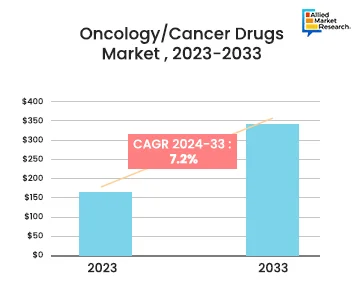
Human Fibrinogen Concentrate Market
Human fibrinogen concentrate is an important hematological agent used to treat chronic congenital fibrinogen deficiency syndromes such as hypofibrinogenemia and afibrinogenemia. These ailments are characterized by acute bleeding which necessitates the use of a therapeutic catalyst that can accelerate the process of blood clotting. The preference for fibrinogen concentrate has surged due to its efficacy in mimicking the stages of the physiological coagulation cascade, thus forming a blood clot. The Allied Market Research report on the human fibrinogen concentrate market states that the industry is predicted to garner a revenue of $2.9 billion by 2035, rising at a CAGR of 11% from 2024 to 2035. The landscape accounted for $0.8 billion in 2023.
The AMR report places special emphasis on the segmental analysis which enables companies to focus on the key investment areas in the market. The study on the human fibrinogen concentrate landscape classifies the industry on the lines of indication, form, and end user. Based on indication, the congenital fibrinogen deficiency segment has been the most dominant and is anticipated to bring in new opportunities for growth from 2024 to 2035. The increasing tendency toward consanguineous marriages in various countries has led to a surge in the prevalence of chronic deficiency syndrome in newborns. Naturally, the demand for human fibrinogen concentrate has escalated substantially and is expected to witness growth in the coming period.
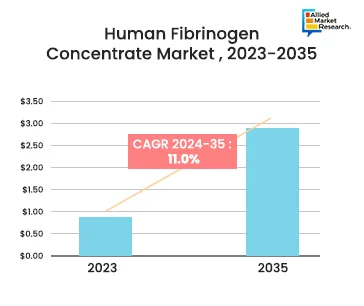
Flow Cytometry Market
Over the years, different mechanisms have been designed to accelerate drug development processes. One such analytical technique is flow cytometry which is used in biology and chemistry to identify and measure various cellular characteristics. Flow cytometry has become indispensable to scientific approaches such as immunology and hematology as it helps researchers and clinicians analyze complex cell characteristics. Allied Market Research, in its report on the flow cytometry market, highlights that the industry is estimated to gather a revenue of $16.6 billion by 2032. The landscape accounted for $6.2 billion in 2022 and is projected to rise at a CAGR of 10.3% in the 2023-2032 period. The growing adoption of flow cytometry systems in personalized drug development processes has helped the market reach new heights in Q3 2024.
The AMR report categorizes the landscape based on various segments such as component, technology, application, and end user. On the basis of component, the reagents and consumables segment garnered the highest revenue share in 2022 and is anticipated to continue its dominance in the coming period. The growing use of reagents in almost every process associated with flow cytometry has played a major role in the rise of the industry. By end user, the commercial organizations segment has witnessed immense growth in recent times. The increased adoption of flow cytometry in different drug discovery and development processes has generated numerous investment opportunities in the landscape.
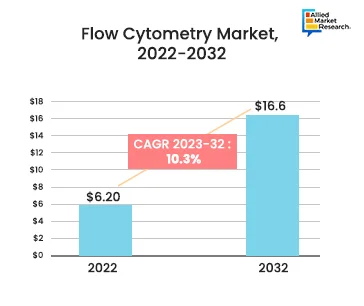
Dermal Filler Market
Dermal filler is a cosmetic, minimally invasive, non-surgical procedure in which a tissue-friendly gel is injected into certain areas such as the face to rejuvenate skin, restore volume, and smoothen wrinkles and lines. Solutions or compounds used in these procedures generally include calcium hydroxylapatite, hyaluronic acid, and poly-L-lactic acid as these substances help in reducing the signs of aging and enhancing facial features. Allied Market Research recently published a report on the dermal filler market which states that the industry accounted for $6.3 billion in 2023. The landscape is anticipated to gather a revenue of $16.8 billion by 2033, showcasing at a CAGR of 10.3% from 2024 to 2033.
The AMR report covers the performance of the industry in various regions including North America, Europe, LAMEA, and Asia-Pacific. The main objective behind the exercise is to enable businesses to make the right investment decisions in the long run. In the case of the dermal filler landscape, the North America province is expected to be the most profitable in the 2024-2033 period. The growing expanse of the healthcare infrastructure and technological advancements in the medical sector have generated new opportunities. Furthermore, the rising demand for cosmetic procedures, the preference for minimally invasive surgeries, and the rising disposable income of people in countries such as the US and Canada have broadened the scope of the market.
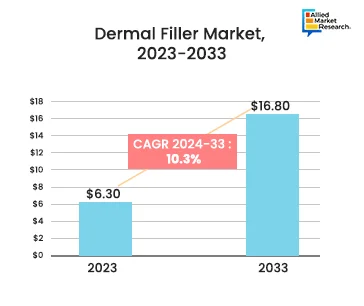
Long Read Sequencing Market
Long read sequencing is one of the latest developments in the sphere of genetic engineering. It is an innovative technique that allows for DNA sequencing of much longer threads as compared to traditional methods. The mechanism has become popular as it helps researchers understand evolutionary processes and genetic diversity. The technology has found diverse applications in different fields of clinical diagnostics, cancer treatment, pathogen evolution, and precision medicine. As per the Allied Market Research report on the long read sequencing market, the widespread applicability of this mechanism has played a major role in the growth of the industry. The landscape is expected to gather a revenue of $5.2 billion by 2032, thus surging ahead at a CAGR of 21.7% during 2023 to 2032.
The AMR report also covers every segment of the market comprehensively to aid businesses in formulating their plans for gaining an advantage over their peers. The study divides the landscape into categories based on application, end user, product, and technique. By technique, the single-molecule real-time sequencing (SMRT) segment is anticipated to make significant gains in the coming period. The ability of the technique to detect structural variants, minimize sequencing biases, and offer higher accuracy is estimated to strengthen the position of the industry. Moreover, SMRT methodology is widely used in clinical applications, research, and genomics studies which has further helped the segment flourish in the third quarter of 2024.
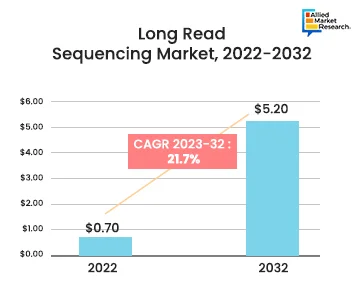
The Essence
Allied Market Research, using its in-house ‘Title Matrix Tool’, has compiled a study highlighting the top 5 markets in the life sciences domain. Each of these markets is analyzed holistically in their reports which throw light on the growth drivers, investment opportunities, and restraints, thereby aiding companies to focus on the key areas in the landscape. The study enables companies to chalk out strategies for expanding their operations across the globe in the long run.
For tips and recommendations on how businesses can capitalize on the opportunities offered by the life sciences domain, contact our experts.

